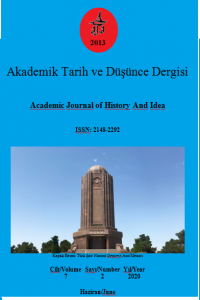Türk Araştırmalarında Kafkas İslam Ordusunun Şuşa Zaferi
Azerbaycan, 28 Mayıs 1918'de zor tarihi koşullar altında bağımsızlığını ilan etmiştir. Azerbaycan halkının bağımsızlığına ve varlığına yönelik ciddi tehditlerin bulunduğu böylesine karmaşık tarihi koşullarda Azerbaycan Hükümeti, Osmanlı Devleti ile 4 Haziran'da 1918 yılında Batum şehrinde imzalanan Dostluk Antlaşması'nın 4.Maddesi uyarınca Osmanlı Devletinden askeri yardım talebinde bulunmuştur. Bu istek üzerine, Azerbaycan'ın yardımına sınırlı sayıda Osmanlı askeri gücü gönderilmişti. Azerbaycan'a gelen bu kuvvetlerle, Azerbaycan'ın milli askeri kuvvetleri temelinde Kafkas İslam Ordusu oluşturulmuştu. Kafkas İslam Ordusu, Gence şehrinden Bakü şehrine kadar muzaffer bir savaş rotası geçti. 15 Eylül 1918'de Bakü şehri işgalci güçlerden kurtarıldı ve yeni kurulan Azerbaycan devletinin merkez şehri oldu. Bakü şehrinin kurtarılmasından sonra Kafkas İslam Ordusu güçlerinin bir kısmı Karabağ'a gönderildi. Bu bölgeyi ele geçiren Ermeni-Taşnak kuvvetlerine sert bir darbe vuruldu ve Karabağ'ın merkez şehri Şuşa şehrinde Azerbaycan devletinin bayrağı çekildi. Bu makale, Kafkas İslam Ordusu'nun Şuşa zaferine ve bu zaferin Türkçe çalışmalarda nasıl incelendiğine yer vermiştir.
Anahtar Kelimeler:
Azerbaycan, Kafkas İslam Ordusu, Bakü zaferi, Karabağ harekâtı, Şuşa, independence of Azerbaijan, Caucasian Islamic Army, Baku victory, Karabakh movement, liberation of Shusha
Shusa’s victory of Caucasian Islamic Army in Turkish Studies
On May 28, 1918, under complicated historical conditions, the people of Azerbaijan declared their independence. In such complex historical conditions, where there are severe threaten to the sovereignty and existence of the Azerbaijani people, the Azerbaijani government requested military assistance from the Ottoman state by the 4th clause of the Treaty of Friendship signed with the Ottoman state on June 4, 1918, in the city of Batumi. By that request, a limited number of Ottoman military forces were sent to the aid of Azerbaijan. With those forces that came to Azerbaijan, the Caucasian Islamic Army was created over the national military forces of Azerbaijan. The Caucasian Islamic Army passed a victorious battle route starting from Ganja to Baku. On September 15, 1918, the city of Baku was liberated from the occupying forces and became the central city of the newly created state of Azerbaijan. After the liberation of Baku city, a part of the forces of the Caucasian Islamic Army was sent to Karabakh. The Armenian-Dashnak forces, taken control of this region, were dealt a strong blow and the flag of the Azerbaijani state was raised in the city of Shusha, the center of Karabakh. This article includes the victory of the Caucasian Islamic Army in Shusha and how this victory is examined in Turkish studies.
Keywords:
independence of Azerbaijan, Caucasian Islamic Army, Baku victory, Karabakh movement, liberation of Shusha,
- Yayın Aralığı: Yılda 6 Sayı
- Başlangıç: 2013
- Yayıncı: Hakan YILMAZ
Sayıdaki Diğer Makaleler
Erməni Vandalizminə Məruz Qalmiş Xocali-Gədəbəy Mədəniyyəti abidələrinin Naxçıvanda İzləri
Albaniyanın Şəki Vilayətinin Qəbir Abidələri (III-VIII Əsrlər)
Azərbaycan səhiyyəsi müxtəlif siyasi sistemlər konteksində (1900-1930-cu illər)
Türk Araştırmalarında Kafkas İslam Ordusunun Şuşa Zaferi
Esen BAYDEMİR, Lütfiye Gül GÜNDÜZ
Türk Devletleri Birliği Gerçeği ve İşbirliği Perspektifleri
